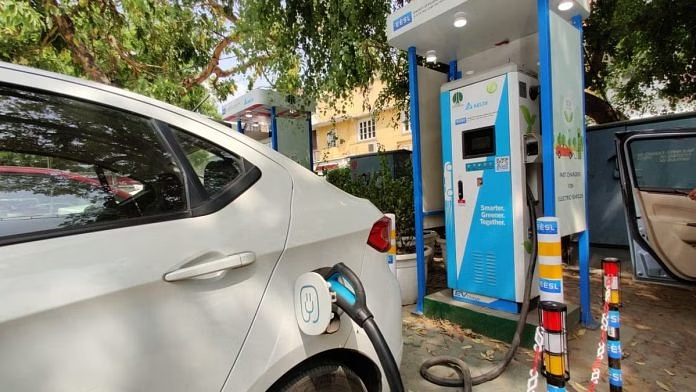Electric vehicles (EVs) are picking up momentum in India. By FY30, EVs might account for 30-35% of yearly vehicle deals, according to a report by SBI Capital Markets (SBICAPS). In any case, Internal Combustion Engine (ICE) vehicles are likely to stay a significant portion of the scene.
India’s EV penetration has developed from less than 1% in 2019 to 7.4% in 2024. With low vehicle ownership and one of a kind development drivers, EVs may gotten to be the primary vehicle choice for numerous Indians. This move takes after how India moved straightforwardly to 4G, skipping 3G innovation.
Batteries: A Key Focus Area
Batteries and electronic drive units make up 50% of an EV’s cost. To decrease reliance on imports, the government’s Production Linked Incentive (PLI) for Advanced Chemistry Cells (ACC) is empowering local production.
As of now, 75% of battery needs are outsourced by producers. By FY30, this number is anticipated to drop to 50% as companies contribute in joint ventures and organizations together.
Investment in Infrastructure
To meet the developing request, India will require critical investment. Around ₹500-600 billion will go into creating 100 GWh of EV battery capacity by 2030. An extra ₹200 billion is required for open charging infrastructure, focusing on 90,000 charging stations by FY30.
Government Support Drives Adoption
The government is giving numerous motivating forces to boost EV adoption. GST on EVs is as it were 5%, compared to 28% for ICE vehicles. A few states offer reduced street taxes, and programs like FAME and PM E-DRIVE give subsidies for EVs and charging infrastructure.
Particular plans just like the Scheme to Promote Manufacturing of Electric Passenger Cars in India (SPMEPCI) center on accelerating private car selection, where EV entrance remains low.
Two-Wheelers Lead the Way
Two-wheelers (2Ws) and three-wheelers (3Ws) are driving the EV transition due to their affordability and broad utilize. For private cars, buyers prioritize performance, comfort, and safety, making this a slower-growing section.
India’s EV ecosystem is advancing quickly. With strong policies, technological advancements, and buyer awareness, the country is on track to convert its vehicle showcase by 2030.

